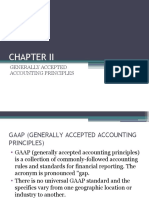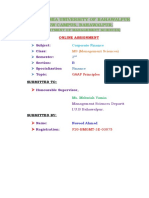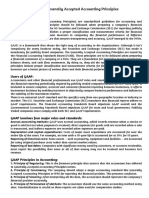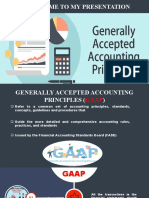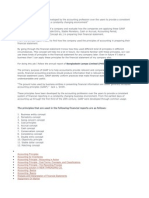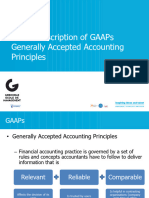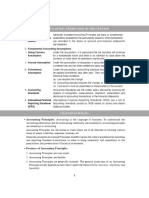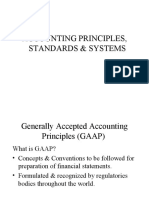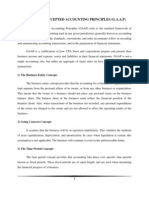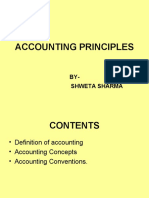ACCOUNTING PRINCIPLES
ACCOUNTING PRINCIPLES are the rules & benchmarks in accounting field, co.
should follow while reporting financial statements. Common set of accounting
standards U.S. based is GAAP (Generally Accepted Accounting Principles).
1) ECONOMIC ENTITY Owner & business as two different entities
2) CONSERVATISM If a situation arises where there are 2 acceptable options for
reporting an item,accountant goes for less favorable option.
3) HISTORICAL COST Recordation of the assets should be on their purchased values
purchased now or years ago.
4) FULL DISCLOSURE Disclosure of all important Information for the users, lenders or
investors within the financial statements or as a footnote.
5) MATCHING CONCEPT The debit side should match with the credit side
6) MATERIALITY The information which will have a material effect should form a
part of the financial statements.
7) MONETARY UNIT transactions that carry a monetary value & stated in terms of a
currency (for example $ in the U.S.) should only be recorded.
8) DUALITY every transaction has 2 aspects ,a debit and a credit of equal amount
9) REVENUE RECOGNITION Recognition of revenues should be on regardless of the
occurrence of transaction actual receipt of the amount.
10) VERFIABLE OBJECTIVE CONCEPT All accounting transaction should evidenced
and supported by business documents
11) TIME PERIOD there should be a standardized time period of reporting the
financial statements usually monthly, quarterly or annually.

